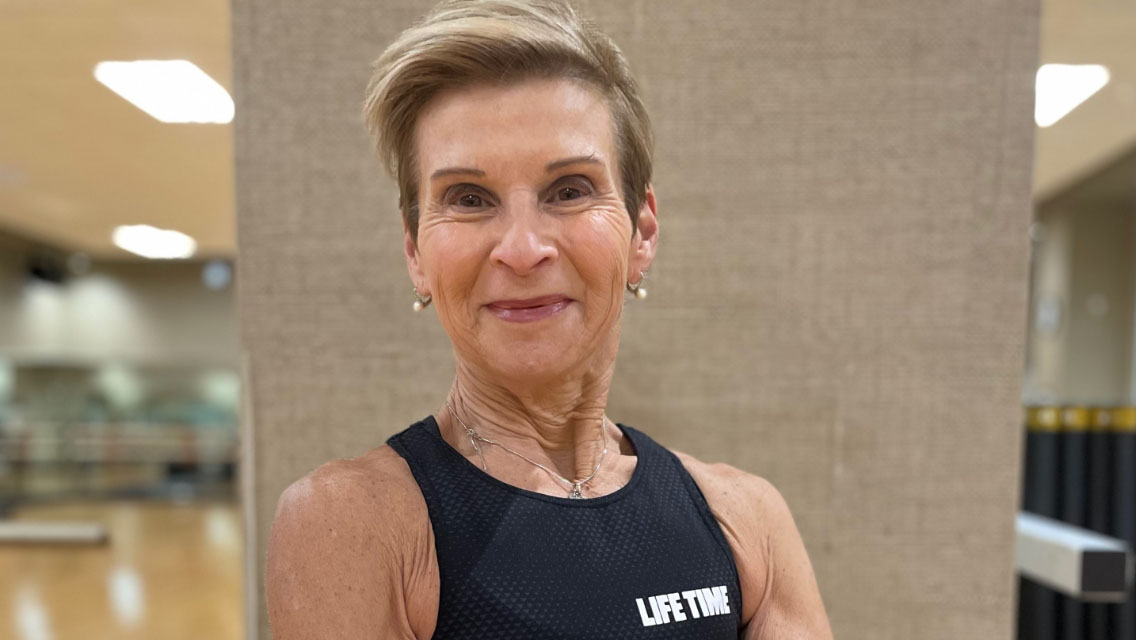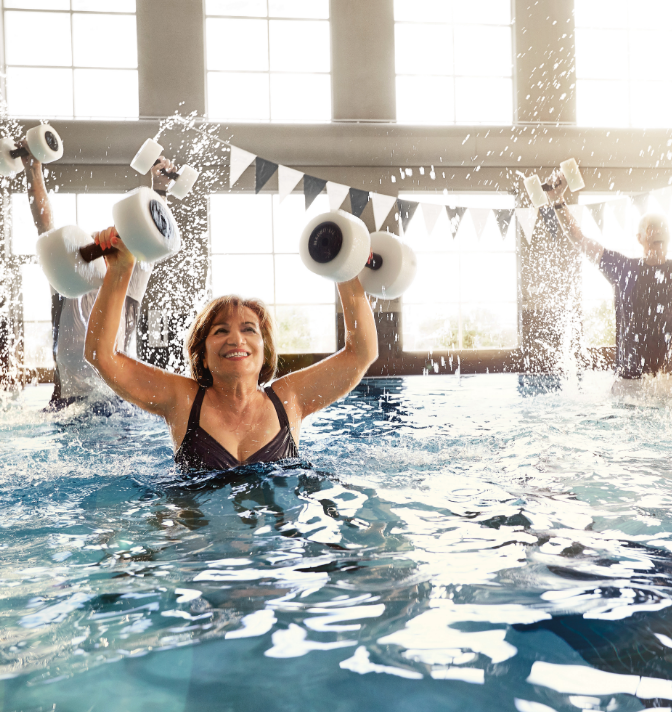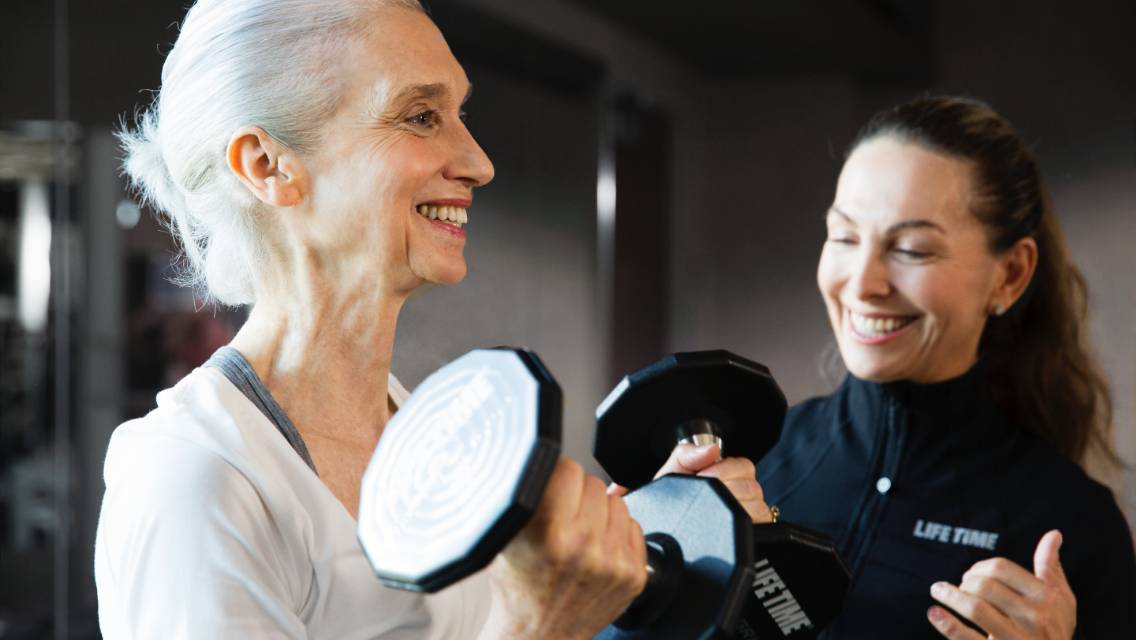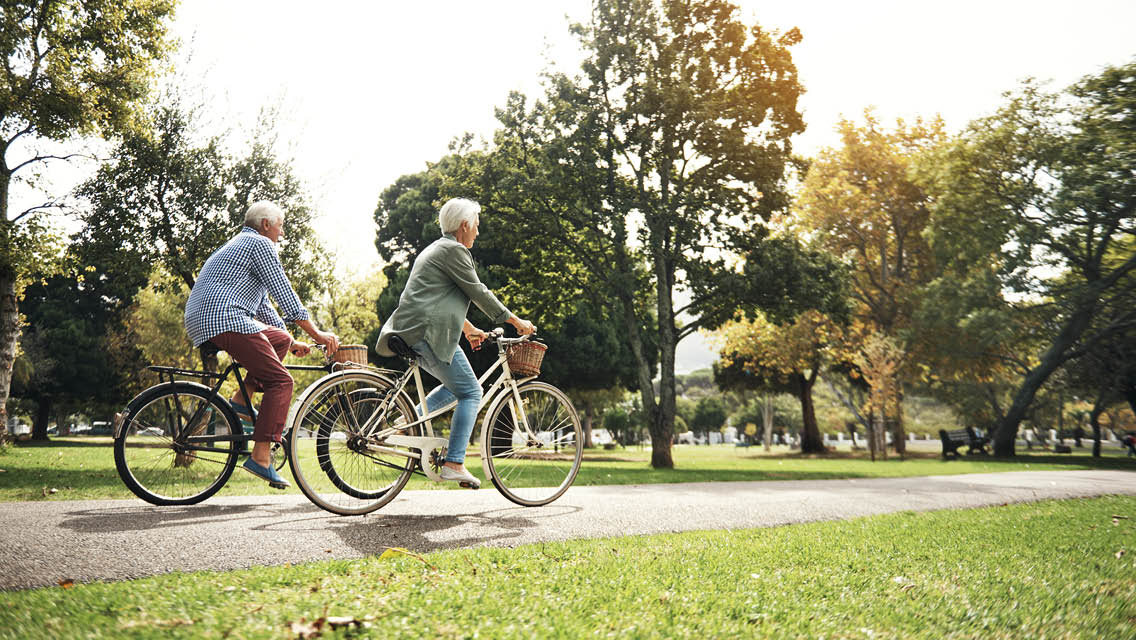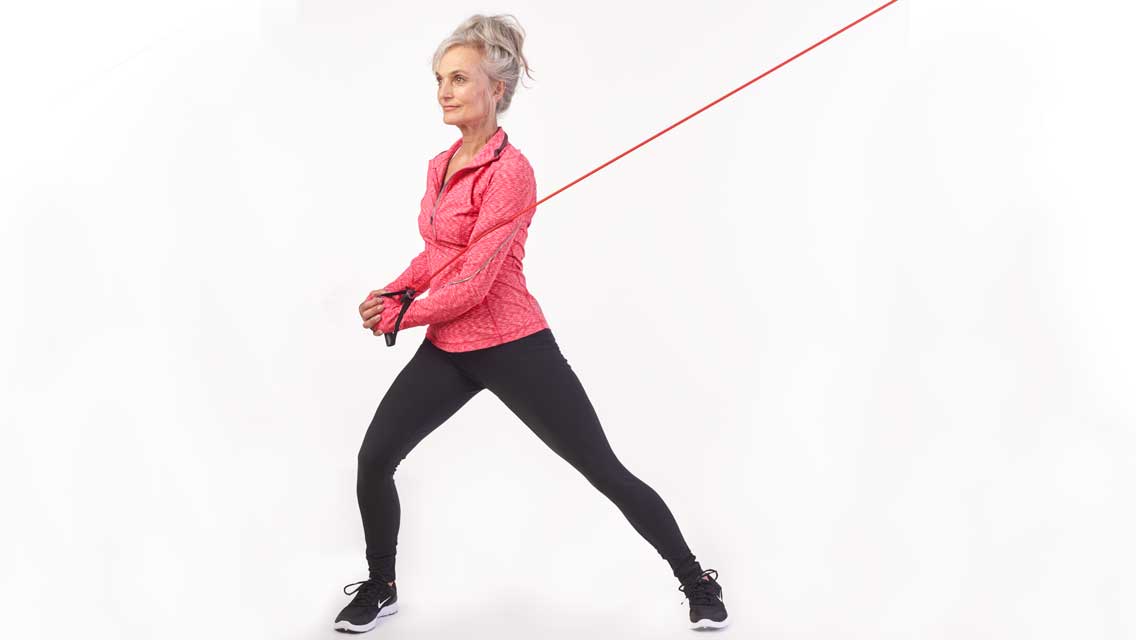When you hear the fitness phrase “low impact,” what comes to mind? If you’re like many people, you may think it describes forms of exercise that are low exertion — or low in benefits. In reality, though, it has nothing to do with effort levels or results.
The term “low impact” actually relates to the type of muscle contractions that happen and the forces that are exerted on the body when undergoing this type of movement. For those seeking exercises that are easier on their joints and effective, low impact is a great option. It can also be useful for those rehabbing from injury or experiencing mobility limitations.
ARORA Total Body, a studio class specifically designed as part of the ARORA programming at Life Time, offers members the ability to get in a cardio and strength workout in a low-impact way. The class also mixes in neuroplasticity drills to help improve mental focus and cognitive health while building muscle.
To give us an idea of what these low-impact movements are like, we asked Roz Frydberg, a Life Time performer who teaches at our Woodbridge and Ajax clubs in Ontario, Canada, to demonstrate three exercises you might see in an ARORA Total Body class.
Supported Squat to T-Plane Squat
“We do this movement near the start of class to warm up the body, specifically your quads and hamstrings,” says Frydberg. “It’s also a great hip opener and good for stability. It helps increase confidence in squatting with built-in support when needed.”
- From a strong standing position, with feet about hip width apart, press your hips down to lower into a squat while simultaneously pressing one palm into your thigh and lifting the other straight up into the air.
- Raise up out of your squat while bringing your lifted palm down so both palms are pushing into your thighs.
- Immediately step one leg back behind you, turning to face the side in a wide stance with your arms open, forming a “T” shape. Squat down.
- Return to the front and repeat on the opposite side.
Volley Block
“This is a full-body cardio movement that strengthens your legs and core, and works on agility, conditioning, and balance,” says Frydberg. “I always notice it brings a smile to participants’ faces when they do it.”
- Begin in a standing position with your knees slightly softened.
- Lift your heels so you’re on the balls of your feet while simultaneously pushing your arms an overhead position, as if you are blocking a volleyball.
- As you lower your arms, bring them together and then immediately step one leg into a diagonal lunge (about 45 degrees) reaching your interlocked arms forward as if you’re about to dig a volleyball.
- Step back and repeat, this time lunging and reaching to the opposite side.
Cross Body Press
“I love this movement for the strength work it delivers to your feet, ankles, glutes, core, biceps, and deltoids,” says Frydberg.
- Begin in a strong standing position with your feet shoulder width apart and a dumbbell or weight in each hand, arms by your sides.
- Soften your right knee as you pivot to the left, bringing your right arm up to cross your midsection and into a bicep curl as you continue raising it toward the ceiling.
- Lower and repeat on the opposite side.
- Tip: Avoid swinging the weights and focus on squeezing your glutes and maintaining a strong core throughout the movement.
